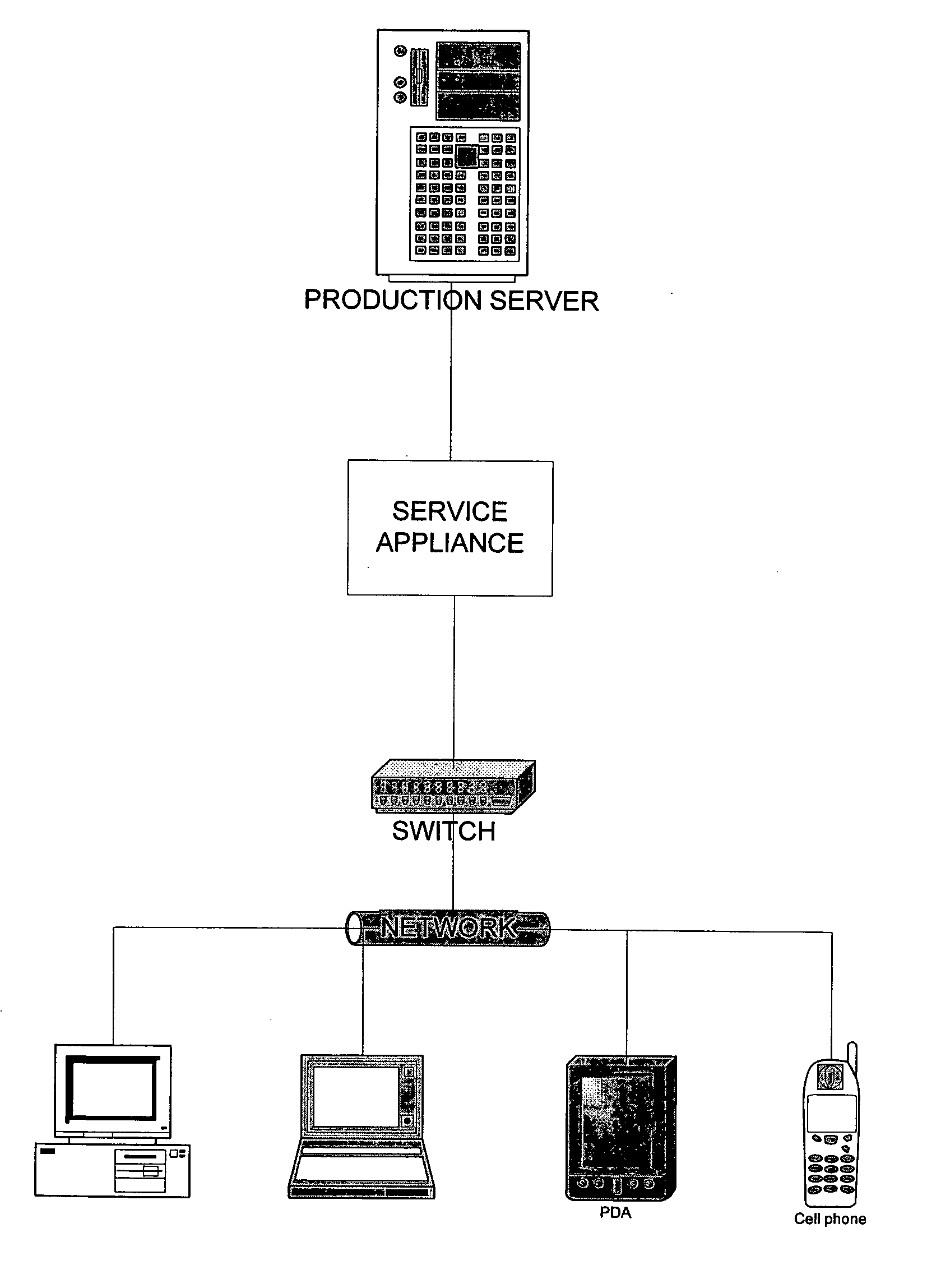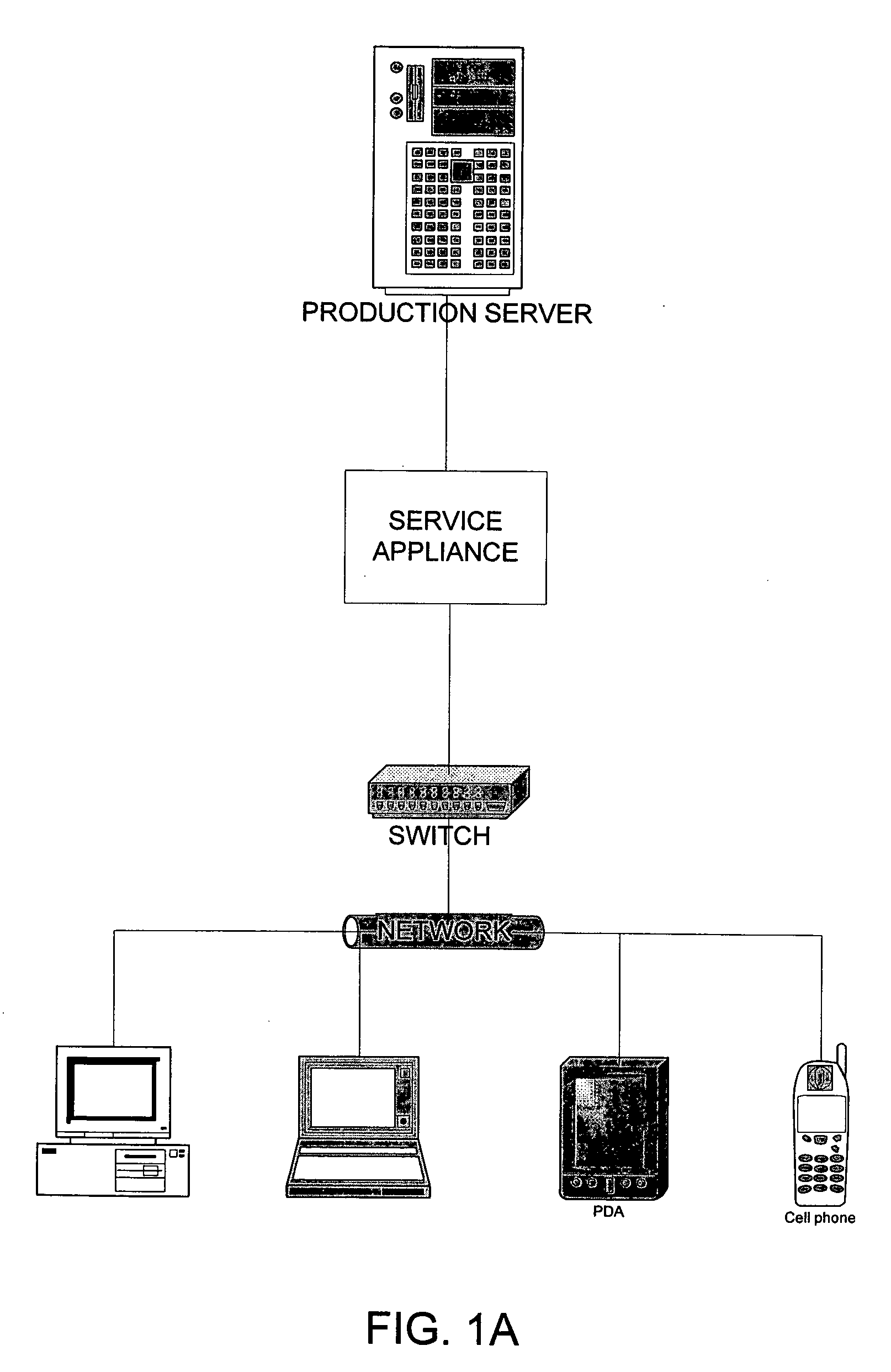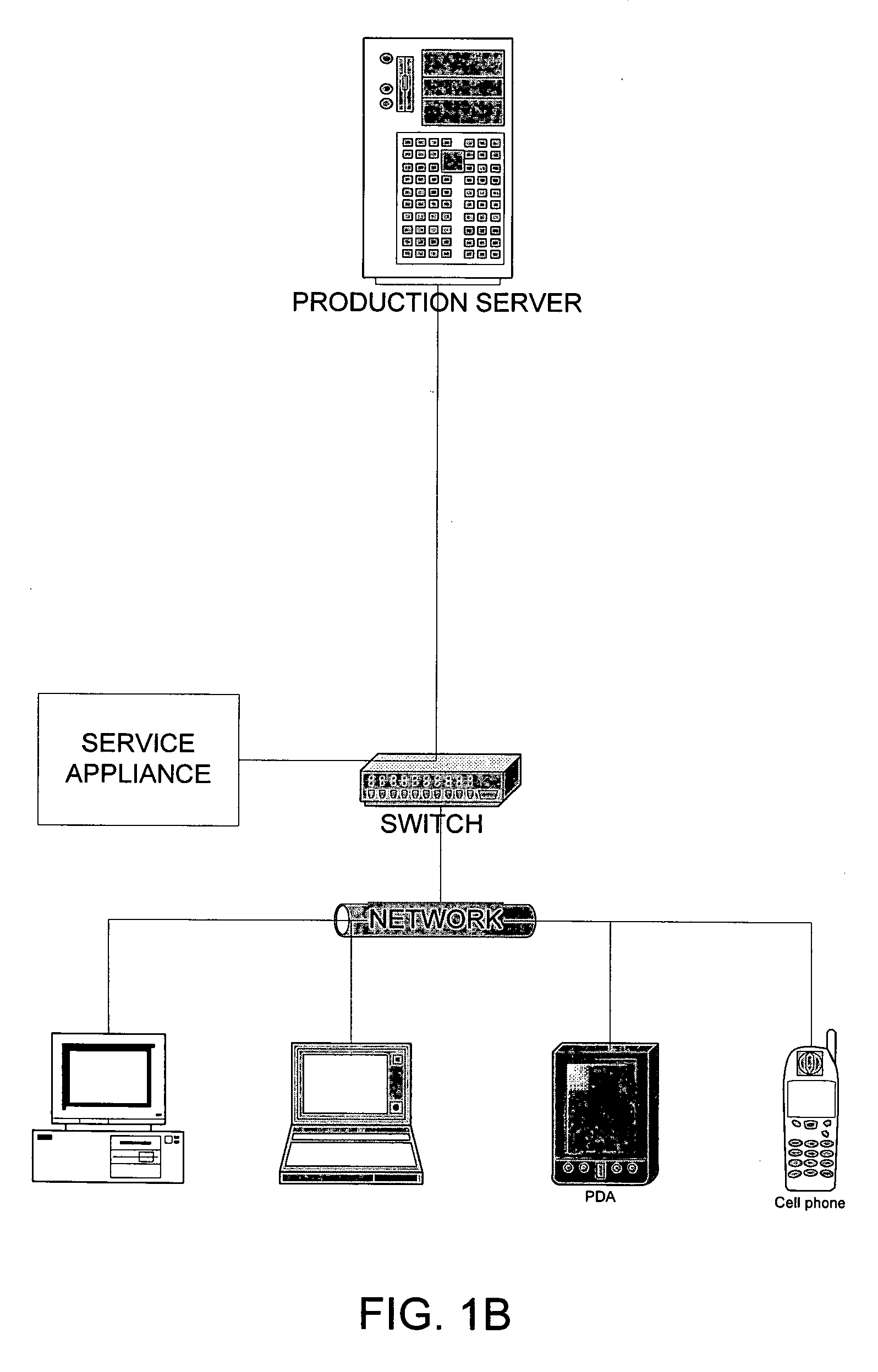Network traffic routing
a network traffic and routing technology, applied in the field of network traffic routing, can solve the problems of reducing efficiency, affecting the efficiency of the organization, so as to achieve the effect of reducing the cost of the organization
- Summary
- Abstract
- Description
- Claims
- Application Information
AI Technical Summary
Benefits of technology
Problems solved by technology
Method used
Image
Examples
first embodiment
[0073] In a first embodiment, an “over the wire” synchronization is achieved using the traffic snooping done in Task 1. As part of the snooping, the service appliance will copy in-flight administrative transactions on the wire as well as the message transaction traffic (commands which apply to messages as well as the message data itself.) The service appliance will do this to maintain the in-process transaction cache that will primarily be used to “play” to the service appliance in the event that the production server dies without completing transactions in flight. Each incomplete transaction queued in the cache will be flushed when the service appliance sees the transaction completion signal pass through it from the production server. Additionally, the service appliance gets sufficient state information about messages from snooping that it may also be able to make better determinations of which messages on the production server need to be replicated (or can be skipped). This approa...
second embodiment
[0076] A second embodiment for synchronization does not require examination and processing of service application data (e.g., message traffic) bound through the service appliance for the production server and is an extension of the initialization code, using connectivity protocol requests, such as MAPI, to replicate service application data (e.g., messages) on a granular basis (e.g., mailbox by mailbox) periodically.
[0077] In a further embodiment, maintaining synchronization with the routing and mail processing configuration of the production server is not a network or processing intensive task. Because this information is a) not likely to change frequently and b) is not sizeable, an hourly replication process (which will not involve that much information transfer) may be sufficient. Also in regard to task 2, maintaining sync for the service appliance with the DC and the GC is neither a frequent nor intensive process. Because many users and entities are unlikely to be added or delet...
PUM
 Login to View More
Login to View More Abstract
Description
Claims
Application Information
 Login to View More
Login to View More - R&D
- Intellectual Property
- Life Sciences
- Materials
- Tech Scout
- Unparalleled Data Quality
- Higher Quality Content
- 60% Fewer Hallucinations
Browse by: Latest US Patents, China's latest patents, Technical Efficacy Thesaurus, Application Domain, Technology Topic, Popular Technical Reports.
© 2025 PatSnap. All rights reserved.Legal|Privacy policy|Modern Slavery Act Transparency Statement|Sitemap|About US| Contact US: help@patsnap.com



